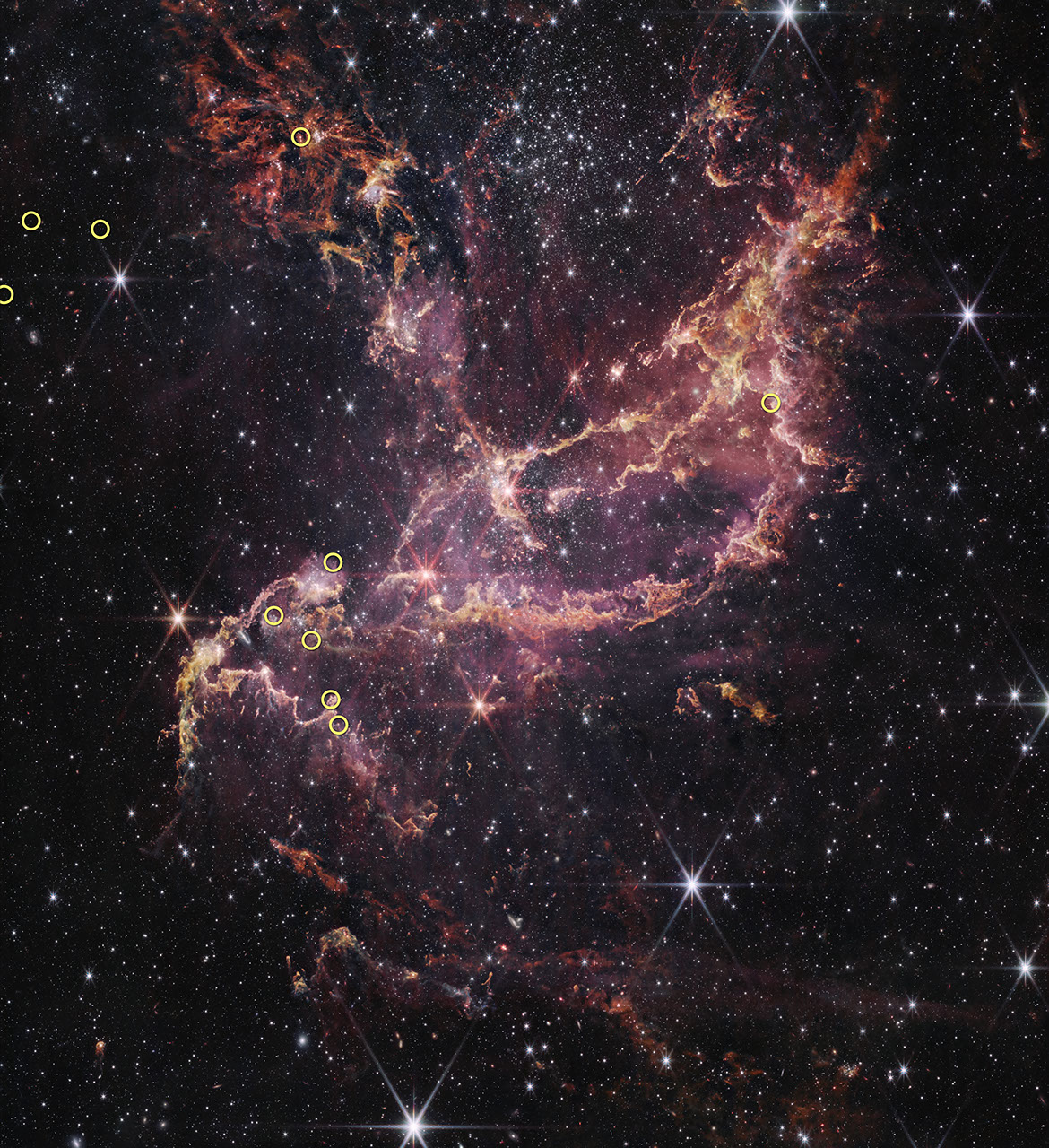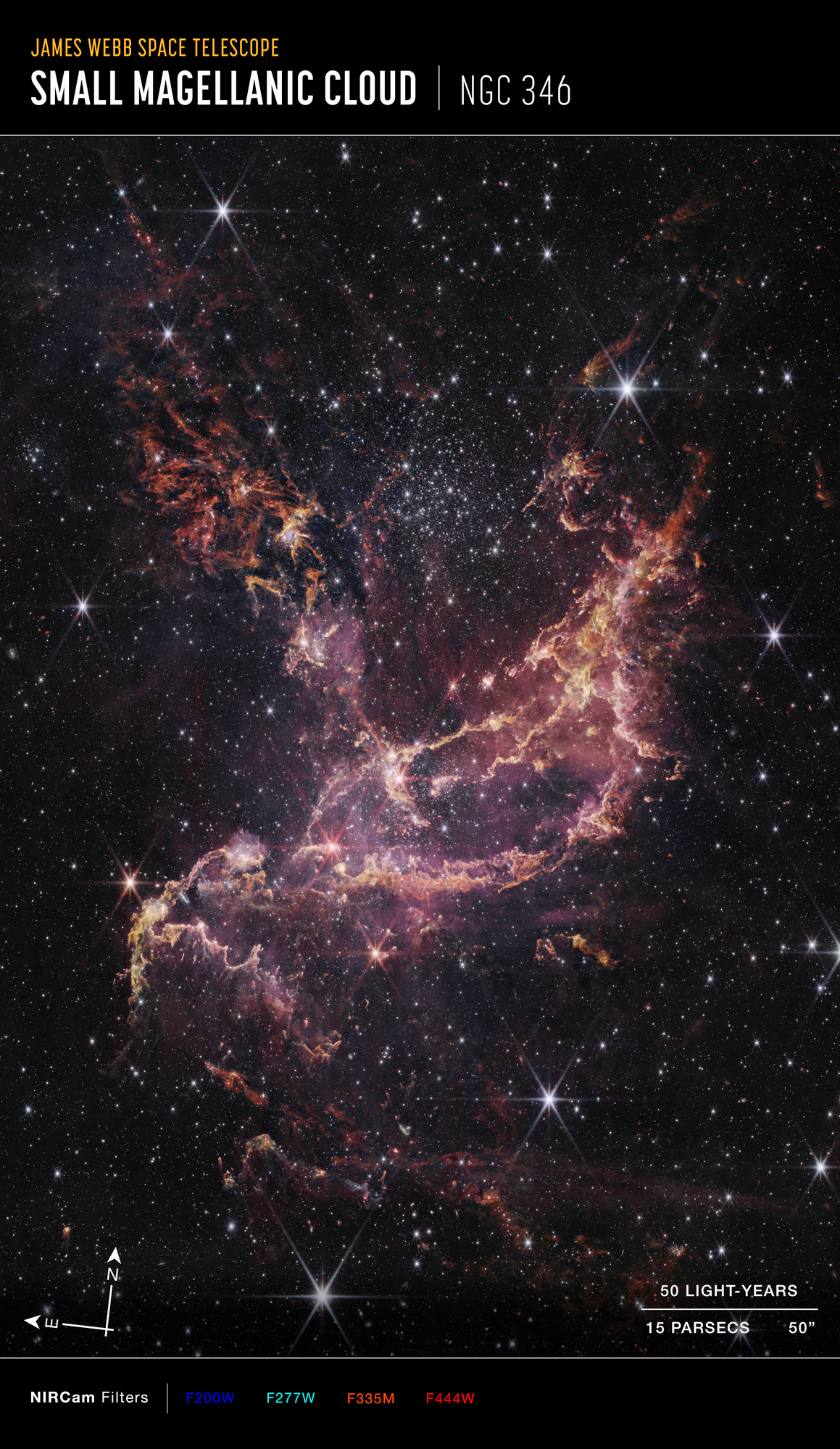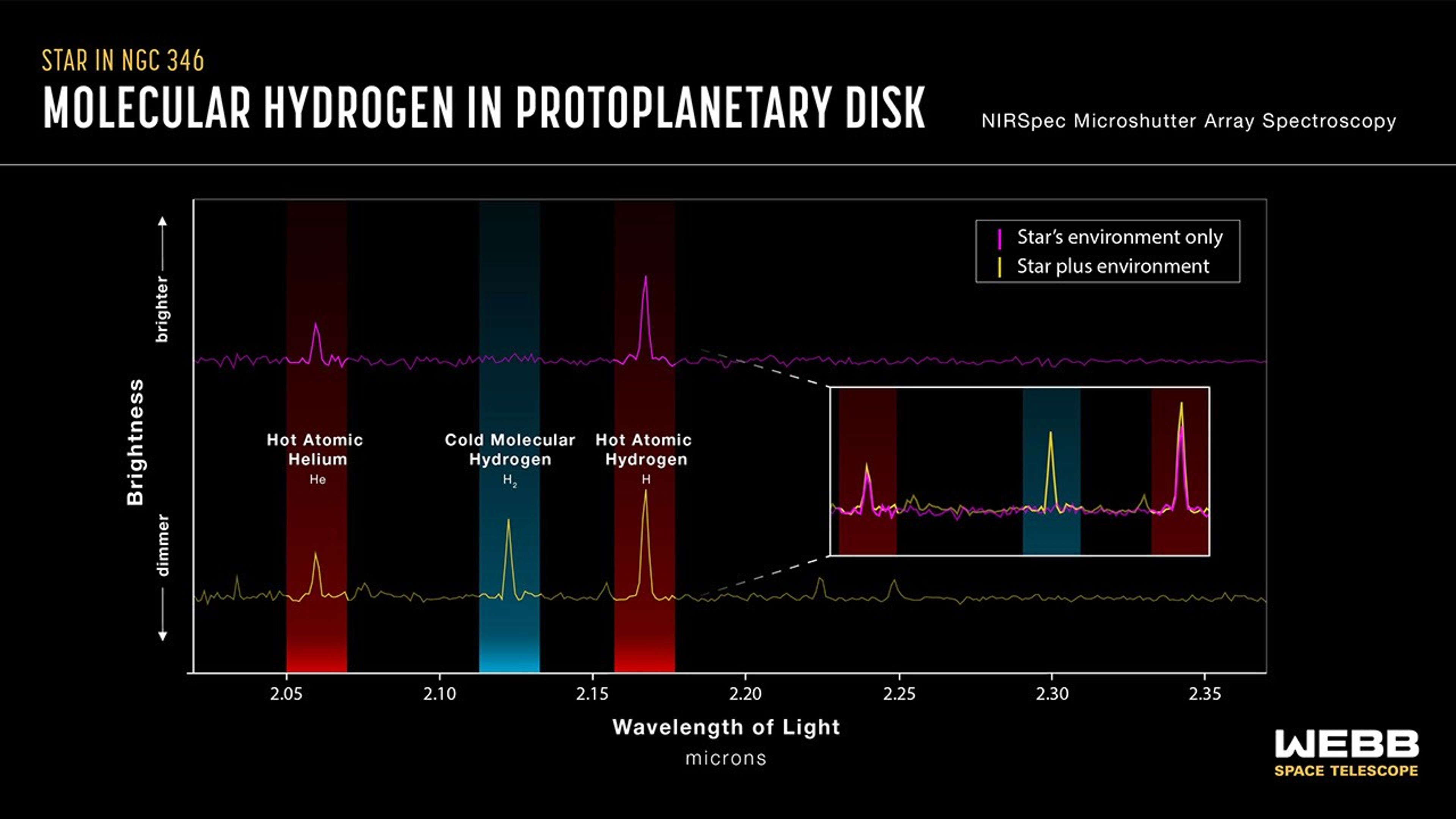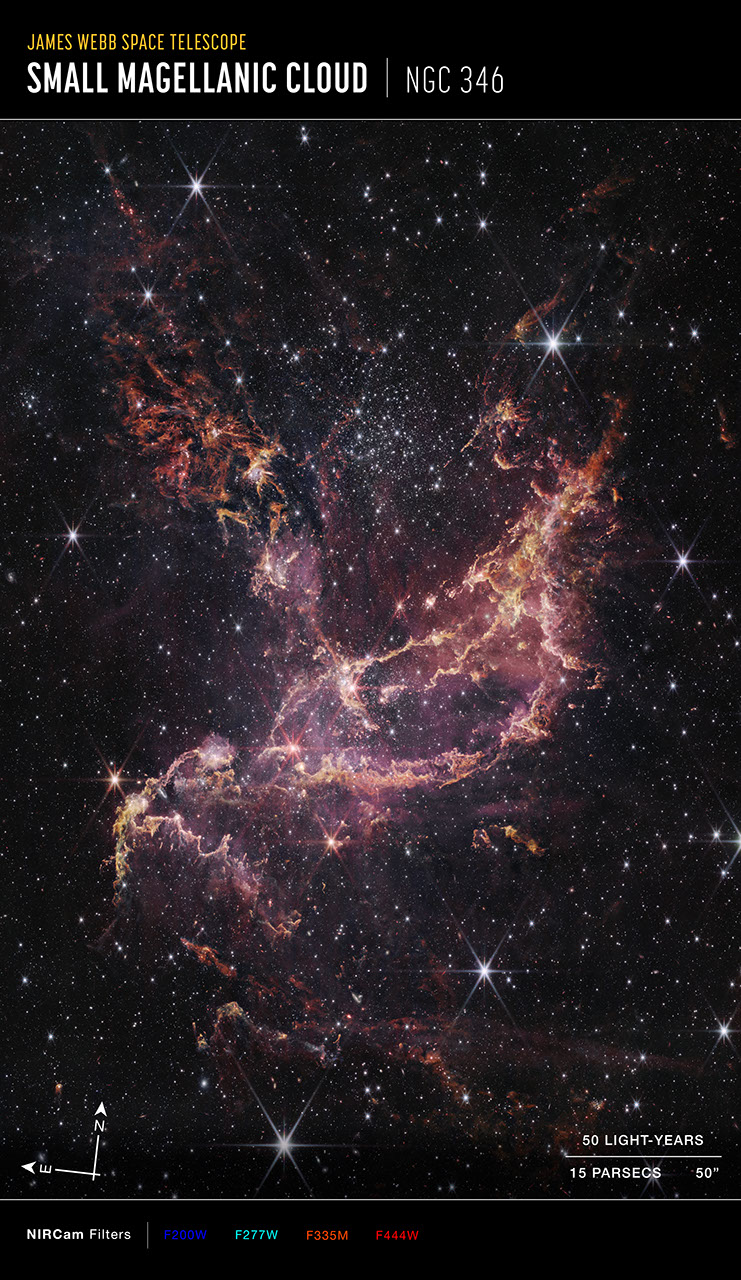1 min read
Protoplanetary Disks in NGC 346 (NIRCam Image)

This is a James Webb Space Telescope image of NGC 346, a massive star cluster in the Small Magellanic Cloud, a dwarf galaxy that is one of the Milky Way's nearest neighbors. With its relative lack of elements heavier than hydrogen and helium, the NGC 346 cluster serves as a nearby proxy for studying stellar environments with similar conditions in the early, distant universe. Ten, small, yellow circles overlaid on the image indicate the positions of the ten stars surveyed in this study.
About the Object
- R.A. PositionR.A. PositionRight ascension – analogous to longitude – is one component of an object's position.00:59:04.95
- Dec. PositionDec. PositionDeclination – analogous to latitude – is one component of an object's position.-72:10:09.15
- ConstellationConstellationOne of 88 recognized regions of the celestial sphere in which the object appears.Tucana
- DistanceDistanceThe physical distance from Earth to the astronomical object. Distances within our solar system are usually measured in Astronomical Units (AU). Distances between stars are usually measured in light-years. Interstellar distances can also be measured in parsecs.200,000 light-years away (61,300 parsecs)
- DimensionsDimensionsThe physical size of the object or the apparent angle it subtends on the sky.This image is about 3.9 arcminutes across (240 light-years)
About the Data
- Data DescriptionData DescriptionProposal: A description of the observations, their scientific justification, and the links to the data available in the science archive.
Science Team: The astronomers who planned the observations and analyzed the data. "PI" refers to the Principal Investigator.This image was created with Webb data from proposal: 1227 (M. Meixner). Image processing: Alyssa Pagan (STScI).
- InstrumentInstrumentThe science instrument used to produce the data.NIRCam
- Exposure DatesExposure DatesThe date(s) that the telescope made its observations and the total exposure time.16 June 2022, 26 June 2022, 10 Oct 2022
- FiltersFiltersThe camera filters that were used in the science observations.F200W; F277W; F335M; F444W
- Object NameObject NameA name or catalog number that astronomers use to identify an astronomical object.NGC 346
- Object DescriptionObject DescriptionThe type of astronomical object.Cluster and Nebulosity in the Small Magellanic Cloud
- Release DateDecember 16, 2024
- Science ReleaseNASA’s Webb Finds Planet-Forming Disks Lived Longer in Early Universe
- CreditImage: NASA, ESA, CSA, STScI, Olivia Jones (UK ATC), Guido De Marchi (ESTEC), Margaret Meixner (USRA)

These images are a composite of separate exposures acquired by the James Webb Space Telescope using the NIRCam instrument. Several filters were used to sample specific wavelength ranges. The color results from assigning different hues (colors) to each monochromatic (grayscale) image associated with an individual filter. In this case, the assigned colors are: Red: F444W, Orange: F335M, Cyan: F277W, Blue: F200W

Related Images & Videos

Protoplanetary Disks in NGC 346 Spectra (NIRSpec)
This graph shows, on the bottom left in yellow, a spectrum of one of the 10 target stars in this study (as well as accompanying light from the immediate background environment). Spectral fingerprints of hot atomic helium, cold molecular hydrogen, and hot atomic hydrogen are...

NGC 346: Hubble and Webb Observations
This side-by-side comparison shows a Hubble image of the massive star cluster NGC 346 (left) versus a Webb image of the same cluster (right). While the Hubble image shows more nebulosity, the Webb image pierces through those clouds to reveal more of the cluster's structure. NGC...

Protoplanetary Disks in NGC 346 (NIRCam Compass Image)
This image of the star cluster NGC 346, captured by Webb's Near-Infrared Camera (NIRCam), shows compass arrows, scale bar, and color key for reference. The north and east compass arrows show the orientation of the image on the sky. Note that the relationship between north and...
Share
Details
Laura Betz
NASA’s Goddard Space Flight Center
Greenbelt, Maryland
laura.e.betz@nasa.gov
NASA, ESA, CSA, STScI, Olivia Jones (UK ATC), Guido De Marchi (ESTEC), Margaret Meixner (USRA)































